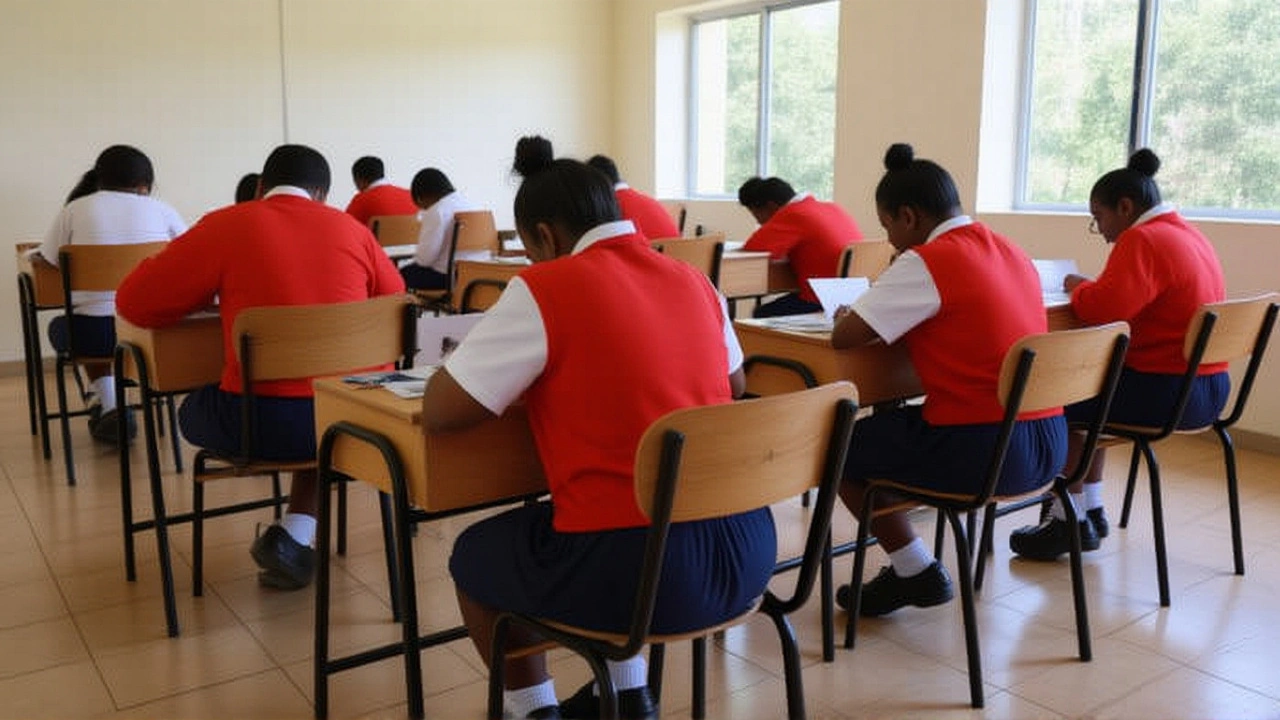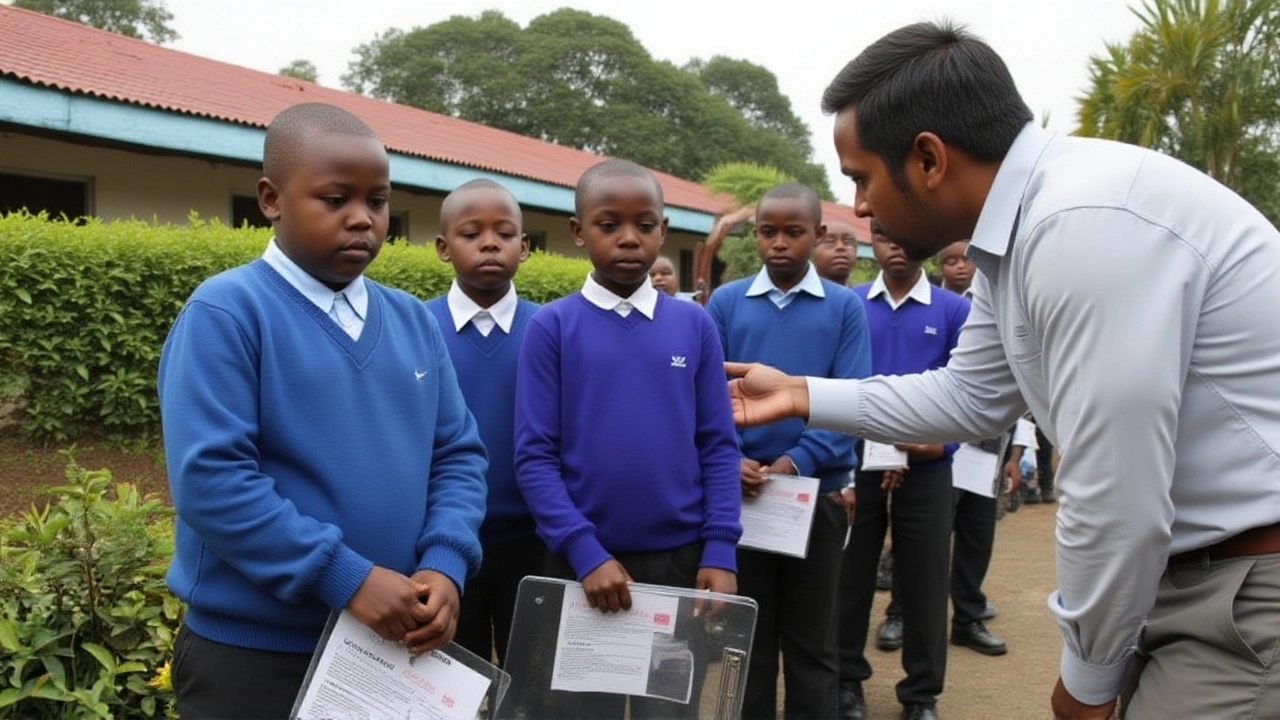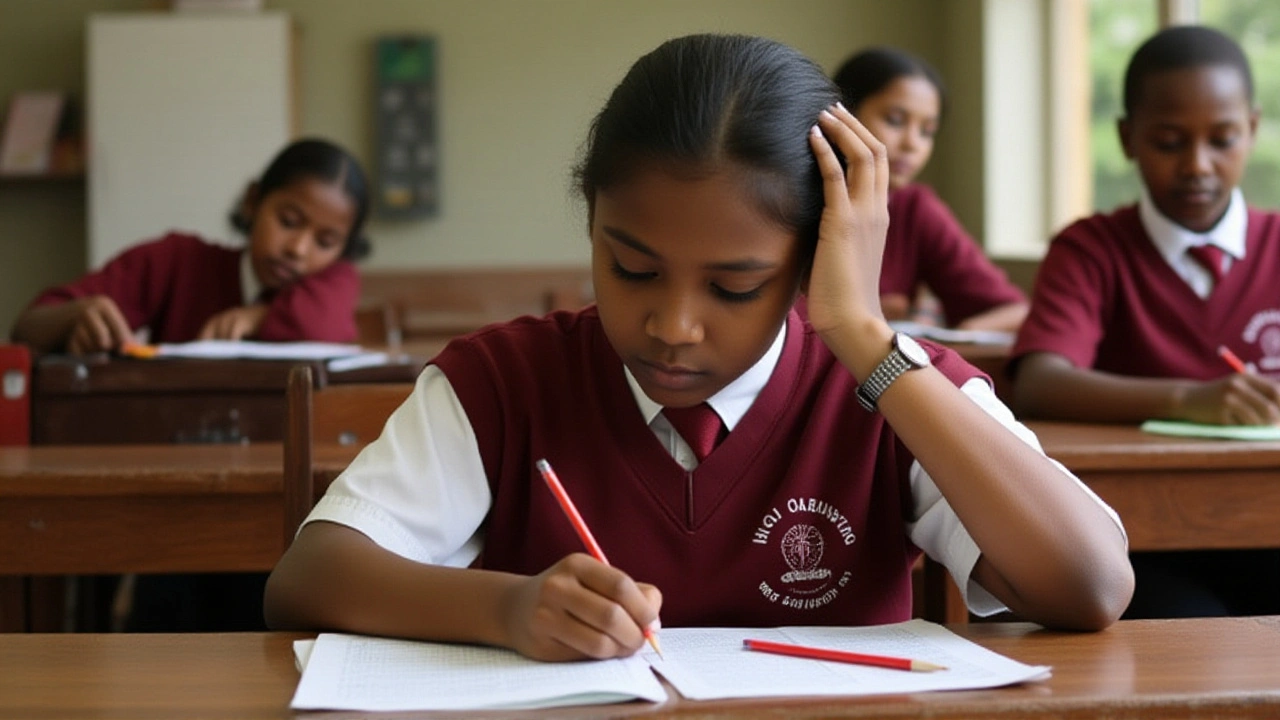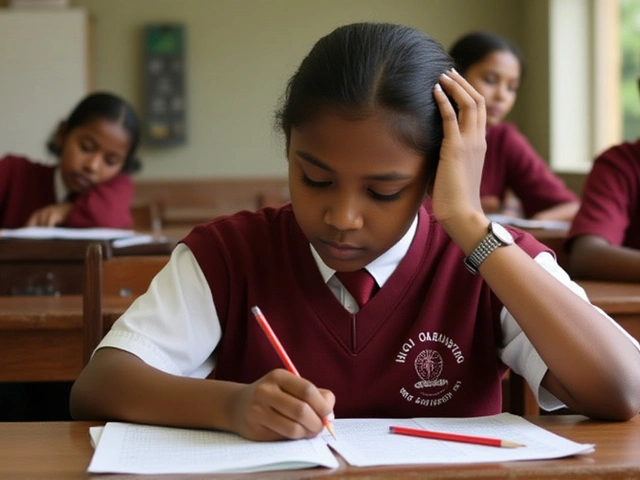When Kenya National Examinations Council (KNEC) published the 2025 Term‑Three School‑Based Assessments on September 29, schools across Kenya woke up to a flurry of downloads, planning meetings, and a ticking clock that ends on October 23.
Here’s the thing: the assessments, now live on the Council’s Competency‑Based Assessment portal (cba.knec.ac.ke), must be administered, marked, and the scores uploaded within a tight three‑week window. The move is a cornerstone of the country’s ongoing shift to the Competency‑Based Curriculum (CBC), a reform that aims to replace rote memorisation with real‑world problem solving.
Background: Kenya’s shift to the Competency‑Based Curriculum
Back in 2017 the Ministry of Education announced a bold overhaul of the national curriculum, promising a learning experience that blends knowledge, practical skills, creativity and critical thinking. Since then, the Ministry of Education (Kenya) has rolled out new teacher‑training programmes, revamped textbooks, and, crucially, introduced school‑based assessments as an annual checkpoint.
The CBC model breaks the year into three terms: Term One for diagnostic work, Term Two for projects and practicals, and Term Three for the written SBA. This structure is meant to give teachers a continuous feedback loop rather than waiting for a single high‑stakes exam at the end of the year.
What the 2025 Term‑Three SBAs entail
According to the circular circulated to headteachers, the SBA covers a staggered set of subjects depending on the grade. Grade 3 learners face only Mathematics and English. Grades 4 and 5 jump to eight learning areas, ranging from Kiswahili to Kenyan Sign Language, Agriculture, Science & Technology, Social Studies, Religious Education (covering Christian, Islamic and Hindu streams) and Creative Arts.
Grades 7 and 8 endure the most extensive programme – ten subjects including Integrated Science, Pre‑Technical Studies and even Sports. The design reflects the CBC’s emphasis on holistic development: it isn’t just about answering multiple‑choice questions, but also demonstrating competence in practical tasks that were completed earlier in Term Two.
It’s worth noting that Grade 6 and Grade 9 are exempt this year. Those cohorts are gearing up for their national summative assessments – the Kenya Primary School Education Assessment (KPSEA) for Grade 6 and the Kenya Junior Secondary Education Assessment (KJSEA) for Grade 9 – which take place in December.
How schools will implement the new tests
Headteachers are instructed to log onto the CBA portal using their credentials, download the relevant test papers, and print them for classroom use. If a school hits a technical snag, the circular says they must contact KNEC’s support line – a new help‑desk that went live earlier this year.
Once the exams are administered, teachers enter the scores back into the portal. The deadline of October 23 leaves roughly three weeks for the entire cycle – a tight schedule that some principals say feels “like running a marathon in a sprint.”
- September 29: SBA papers uploaded.
- Early October: Schools download and schedule tests.
- Mid‑October: Exams administered, marking completed.
- October 23: All scores submitted to the CBA portal.
For schools in remote areas without stable internet, KNEC has arranged for regional hubs where data can be entered offline and later synced.

Reactions from educators and officials
“The timeline is aggressive, but it forces us to be disciplined,” said Mary Atieno, a headteacher from Nakuru County. “Our teachers have been prepping for months, and the portal makes it easier to get the results into the national database.”
On the other hand, the Kenya Union of Teachers (KUT) issued a statement cautioning that some schools lack sufficient printed copies of the test booklets, risking delays.
From the Ministry’s side, Education Cabinet Secretary Evelyn N. Kioni praised the rollout as “a testament to Kenya’s commitment to modernising education.” She added that the data collected will feed into policy‑making, especially around resource allocation for schools that lag behind.
Implications for learners and future assessments
For pupils, the SBA is more than a test – it’s a snapshot of how well they’re internalising the CBC’s core competencies. Researchers from the University of Nairobi plan to analyse the October data to spot trends in literacy and numeracy across the country’s 47 counties.
Early indicators suggest that schools that invested heavily in teacher‑training during 2023‑24 are likely to see higher average scores, especially in subjects like Science & Technology where practical work is heavily weighted.
Looking ahead, KNEC hinted that the 2026 SBA could incorporate digital assessments for subjects like Mathematics, aligning with the government’s e‑learning agenda.

Next steps and timeline
The Council will publish a post‑assessment report by early December, detailing performance by region, grade and subject. Those findings will inform the next round of curriculum refinements and teacher‑professional‑development workshops scheduled for the first quarter of 2026.
Meanwhile, schools that missed the October 23 deadline will face a short‑term penalty – a temporary lock on accessing the next term’s assessment materials – a measure meant to enforce compliance.
Frequently Asked Questions
How does the SBA affect Grade 7 learners?
Grade 7 students sit for ten subjects, including Integrated Science and Pre‑Technical Studies. Their scores will be entered into the CBA portal by October 23 and used to gauge both academic progress and readiness for junior secondary curricula.
What happens if a school cannot upload scores on time?
KNEC has warned that late submissions will trigger a temporary suspension of access to the next term’s assessment resources. Schools can appeal the decision by providing documented technical issues.
Why are Grade 6 and Grade 9 exempt from the SBA?
Those grades sit for the national summative exams – KPSEA for Grade 6 and KJSEA for Grade 9 – which are high‑stakes assessments scheduled for December. The exemption prevents assessment overload and allows focused preparation for the national exams.
Where can teachers find support if they encounter portal issues?
KNEC set up a dedicated help‑desk reachable via the contact details in the circular. Additionally, regional education offices host offline data‑entry hubs for schools with limited internet connectivity.
What long‑term benefits does the SBA system aim to deliver?
Beyond measuring academic achievement, the SBA provides granular data on competency development, helping policymakers allocate resources, tailor teacher training, and ultimately lift overall learning outcomes across Kenya’s diverse regions.









Allen Rodi
October 7, 2025 AT 04:53Thanks for breaking this down, the timeline is tight but doable if schools coordinate early and use the regional hubs for offline entry. The portal looks user‑friendly enough, and the three‑week window should push teachers to stay on top of marking.
Jody Webster
October 7, 2025 AT 07:06Wow...this is crazzzy!! So many subjects??!!
Steve Goodger
October 7, 2025 AT 11:16The rollout of the 2025 Term‑Three SBAs represents a significant milestone in Kenya’s journey toward competency‑based education.
By aligning assessment dates with the end of Term Three, the system offers a clear snapshot of how well learners have internalised the skills cultivated during earlier terms.
Teachers now have a concrete deadline, which, although tight, encourages timely marking and reduces the backlog that often plagues end‑of‑year examinations.
The inclusion of practical components in subjects such as Science & Technology underscores the shift away from rote memorisation toward real‑world problem solving.
Moreover, the regional offline hubs are a thoughtful solution for schools that struggle with reliable internet connectivity, ensuring no learner is left behind due to technological barriers.
It is also encouraging to see that the assessment covers a broad spectrum of subjects, from Kiswahili to Kenyan Sign Language, reflecting a holistic approach to education.
The exemption of Grade 6 and Grade 9 this year helps to prevent assessment overload and allows those cohorts to focus on their national summative exams.
From a data‑driven perspective, the scores uploaded to the CBA portal will provide policymakers with granular insights into regional performance gaps.
Researchers at the University of Nairobi will be able to analyse trends across the 47 counties, potentially informing targeted interventions and resource allocation.
Schools that have invested in teacher‑training during the 2023‑24 cycle are likely to see a measurable boost in scores, especially in science‑heavy subjects.
The three‑week window, while aggressive, mirrors international best practices where continuous assessment is preferred over a single high‑stakes test.
Parents and communities should be kept informed about the assessment schedule so that they can support learners at home during this critical period.
The Ministry’s ambition to incorporate digital assessments in 2026 shows a forward‑looking attitude that aligns with Kenya’s e‑learning agenda.
However, successful implementation will require sustained funding for hardware, teacher upskilling, and reliable internet access in remote areas.
Ultimately, the SBA rollout is a step toward building a more resilient and adaptive education system that prepares learners for the challenges of the 21st century.
johnson ndiritu
October 7, 2025 AT 12:40This so‑called "tight schedule" is really just a test of bureaucratic incompetence 🙄. If schools can’t meet a three‑week deadline, maybe the whole competency‑based model needs rethinking.
sheri macbeth
October 7, 2025 AT 14:03Oh sure, KNEC totally isn’t using this data to rank schools for foreign aid distribution-right? The conspiracy is always deeper than it looks.
Lane Herron
October 7, 2025 AT 15:26The operationalization of the SBA timeline constitutes a paradigmatic disruption of pedagogical praxis, engendering systemic turbulence and necessitating a recalibration of institutional priorities.
Henry Cohen
October 7, 2025 AT 18:13Honestly the whole thing could have been done last year they just wasted time.
Edward Garza
October 7, 2025 AT 19:36Sounds like a nightmare.
Daisy Pimentel
October 7, 2025 AT 21:00While the fervor is palpable, the deeper ethical implication is the commodification of childhood learning, turning education into a marketable metric rather than a transformative experience.
Jensen Santillan
October 7, 2025 AT 23:46In response to the earlier lament, one might argue that the imposed deadline serves as a crucible, refining both instructional design and student resilience. Yet, without adequate infrastructural support, such pressures risk marginalising already vulnerable communities. The discourse should therefore shift from mere compliance to sustainable capacity‑building.
Ashlynn Barbery
October 8, 2025 AT 02:33Allow me to extend my gratitude to all educators diligently preparing for the upcoming SBAs. Your commitment to fostering competency‑based learning is commendable, and I trust the forthcoming assessments will reflect the hard work invested throughout the term.
Sarah Graham
October 8, 2025 AT 05:20Indeed, the collaborative spirit among teachers, administrators, and support staff is the cornerstone of successful implementation. Let us continue to share resources and best practices as we navigate this critical period together.